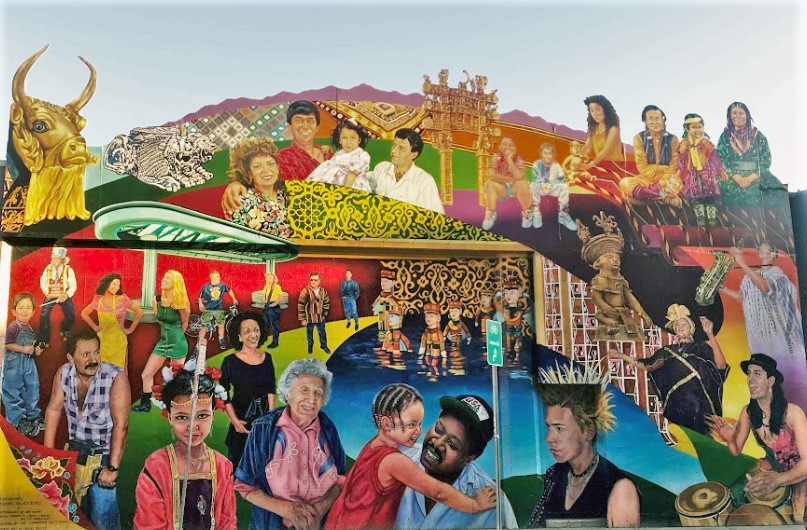The Importance of Street Art
Pictured: A mural on Brookline Street in Central Square.
February 28, 2019
While the sunny days may be shorter, and the sky more dreary, one source of light will remain in Cambridge. In Central Square, several murals have risen across prominent walls in the bustling urban environment. Several utility boxes have been painted with murals by students, artists, and community members. With this burst of color comes a sense of identity, unity, and positivity that flows throughout the city. Additions of street art benefit urban environments by creating a safer community, generating relationships between constituents and businesses, and increasing economic revenue.
Murals, while beautiful, don’t serve simply to brighten your day, but also are an integral part of creating a safer community. Backed by the “broken window theory,” order and beauty motivates more individuals to act responsibly in the community, seeing that it is already established. Without urban art, a sense that environments are already disturbed and therefore can continue to be abused or used inappropriately may continue. If the environment is cared for, drug use, crime, robbery, and vandalism decline statistically. When one window breaks, disorder can erupt.
In SoHo, a branch of New York City, scholars of urban art found that an increase in graffiti art led to relatively low rates of crime when compared to other neighborhoods of the city. Sociologist Gregory Snyder describes this relationship as mutually beneficial, stating that “residents, tourists, and high-end boutiques co-exist with graffiti vandalism in a relatively symbiotic fashion.” Graffiti art, which is criminalized, ironically creates a space of safety when compared to neighborhoods that lack the urban displays of vibrancy.
Economically, street art encourages residents and tourists alike to visit local businesses and regions.
Although street art benefits the safety of urban communities, graffiti has been tied to gentrification of certain neighborhoods. In Cambridge, a tide of new cafes and chain stores have inundated Harvard and now Central Square, spreading down Massachusetts Avenue.
The street art, while not the only cause, exemplifies how a shifted and gentrified environment within the past decade has coexisted with renovations appealing to middle class demographics. While this may lead to a lack of authenticity, the street art itself isn’t directly correlated with the growth in cafes, merely growing at a similarly correlated rate. For the specific entities involved in the creation of public art, a connection between public and private establishments is facilitated.
The mural painted on the wall of the Trader Joe’s on Memorial Drive, for example, depicts an image of community, where dozens of Cantabrigians are enjoying picnics, recreational activities, and views of the Charles River. The painting creates a sense of belonging between community members and businesses.
Economically, street art encourages residents and tourists alike to visit local businesses and regions. Street art has generated conversation within Cambridge and caused many to visit the small alley in Central Square exhibiting a variety of graffiti pieces, along with the new works flooding major building walls. Graffiti and urban art illustrates a sense of creativity and cultural vibrancy that attracts many to areas of Cambridge and other urban cities that may otherwise go unnoticed.
Although graffiti has been deemed illegal in certain regions, the culture and appreciation for different people’s talent and perspectives illustrated with street art generate a community of cultural prosperity and imagination.
This piece also appears in our February 2019 print edition.










